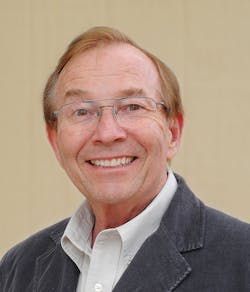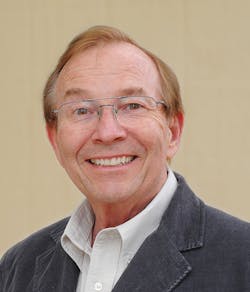That supplement turned out to be one of the most memorable supplements in which I have taken part as the technical writer for T&D World. The transmission and distribution industry’s main emphasis in those days was smart grid technology and renewable energy, but wind and solar generation brought problems of intermittency. As a result, they were non-dispatchable, which would become a bigger problem as more of this type of generation was connected to the grid.
The solution seemed obvious enough to both Rick Bush, T&D World's strategic director, and me. We had suggested combining energy storage with the renewable resources; surprisingly, this point was quite a bone of contention with some readers.
In the supplement, I focused on the need for energy storage to make wind and solar generation more reliable and dispatchable. Remarkably, that really struck a sensitive cord — and not in a good way — with some of my friends and colleagues in the wind industry. It was not my intention to upset anyone, but merely to start a discussion on this missing link in the modern grid.
Several folks wrote to me expressing their deep concern with the supplement. The recurring theme of the correspondence was that the articles could be read by influential people. I thought to myself, "That is the point of writing articles." They were alarmed someone might see the supplement and start specifying storage as part of their renewable facility. When pressed, they did not have any suggestions to address the issue of dispatchability, but they knew they did not agree with what I had written. As I remember, the American Wind Energy Association took the position that storage was not needed.
After a few weeks, the correspondence dropped off and I was on to new material. Then in April 2010, I attended the IEEE Power & Energy Society (PES) T&D Expo in New Orleans, Louisiana. I was expecting a great show and was surprised when some wind suppliers tracked me down on the show floor to tell me they were still unhappy with the articles. It seems they were getting pressure to include energy storage in their wind generation facilities — go figure.
Several months later, I attended the IEEE PES General Meeting in Minneapolis, Minnesota. Yep, you guessed it, I was still a hunted man. These folks were still upset because now utilities and regulators had started asking questions about storage. This time they even cornered Rick and expressed their ire with me.
That evening at dinner, Rick told me I really upset some folks, and they made it a point to tell him. Rick was delighted. He felt we must be doing something right if it was generating discussion a year after publication.
I hope this year’s energy storage supplement will get people talking once more about how energy storage is changing our grid, which it is. Over the past nine years, the technology has gotten everyone’s attention, including manufacturers, utilities, customers and regulators. The technology has advanced and some interesting things are taking place.
The most impactful development has been the incorporation of energy storage into distributed energy resource (DER) systems and the integration of both into the grid. Back in the day, DER was another limited-interest technology getting minimal attention. Then one of its associated technologies — microgrids — began getting noticed and, as they say, the rest is history.
Microgrids gave DER systems the ability to improve the T&D grid’s reliability. When combined with energy storage, DER systems provided that much-needed boost for our power-delivery system. It makes the grid stronger and more resilient to outside forces that cause outages and blackouts, which was shown in graphic detail by the 2017 storms.
Today’s DER systems include components such as hybrid power systems, energy monitoring, microgrids, energy storage and other cutting-edge technologies. DER systems have found their way to behind-the-meter systems, front-of-the-meter systems, the distribution network, the transmission system and everything in between.
Grid-scale DER systems are changing the transmission-distribution interface, with some authorities predicting the boundary will disappear eventually. Some are calling it a decentralization of the grid, while others have said it is a boundarylessness that will define the next generation of our power-delivery system.
Energy storage has improved DER technology and taken the virtual power plant one more step toward reality as the grid moves from 20th-century infrastructure to the modernized power system needed in the 21st century. ♦
About the Author
Gene Wolf
Technical Editor
Gene Wolf has been designing and building substations and other high technology facilities for over 32 years. He received his BSEE from Wichita State University. He received his MSEE from New Mexico State University. He is a registered professional engineer in the states of California and New Mexico. He started his career as a substation engineer for Kansas Gas and Electric, retired as the Principal Engineer of Stations for Public Service Company of New Mexico recently, and founded Lone Wolf Engineering, LLC an engineering consulting company.
Gene is widely recognized as a technical leader in the electric power industry. Gene is a fellow of the IEEE. He is the former Chairman of the IEEE PES T&D Committee. He has held the position of the Chairman of the HVDC & FACTS Subcommittee and membership in many T&D working groups. Gene is also active in renewable energy. He sponsored the formation of the “Integration of Renewable Energy into the Transmission & Distribution Grids” subcommittee and the “Intelligent Grid Transmission and Distribution” subcommittee within the Transmission and Distribution committee.

